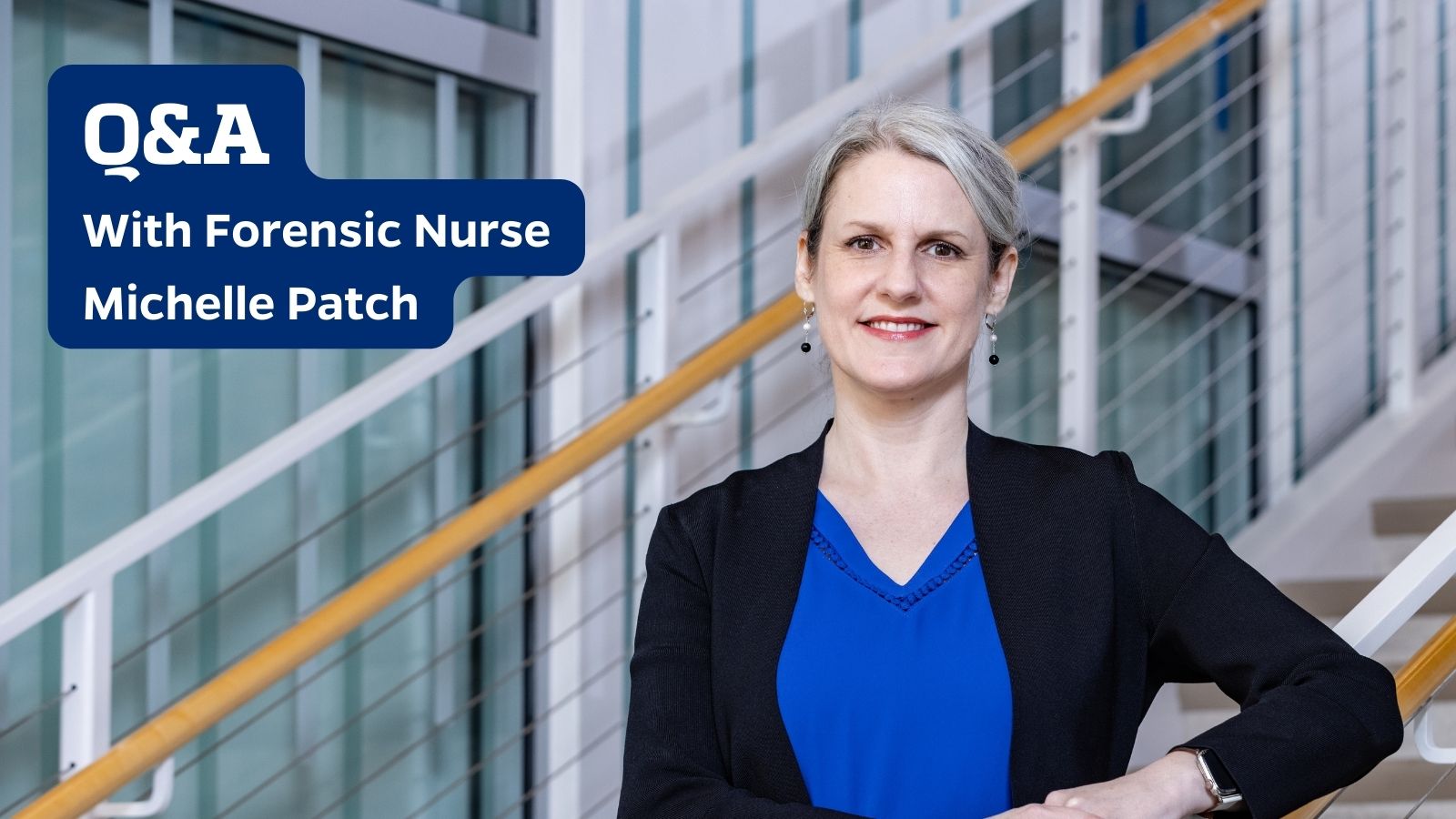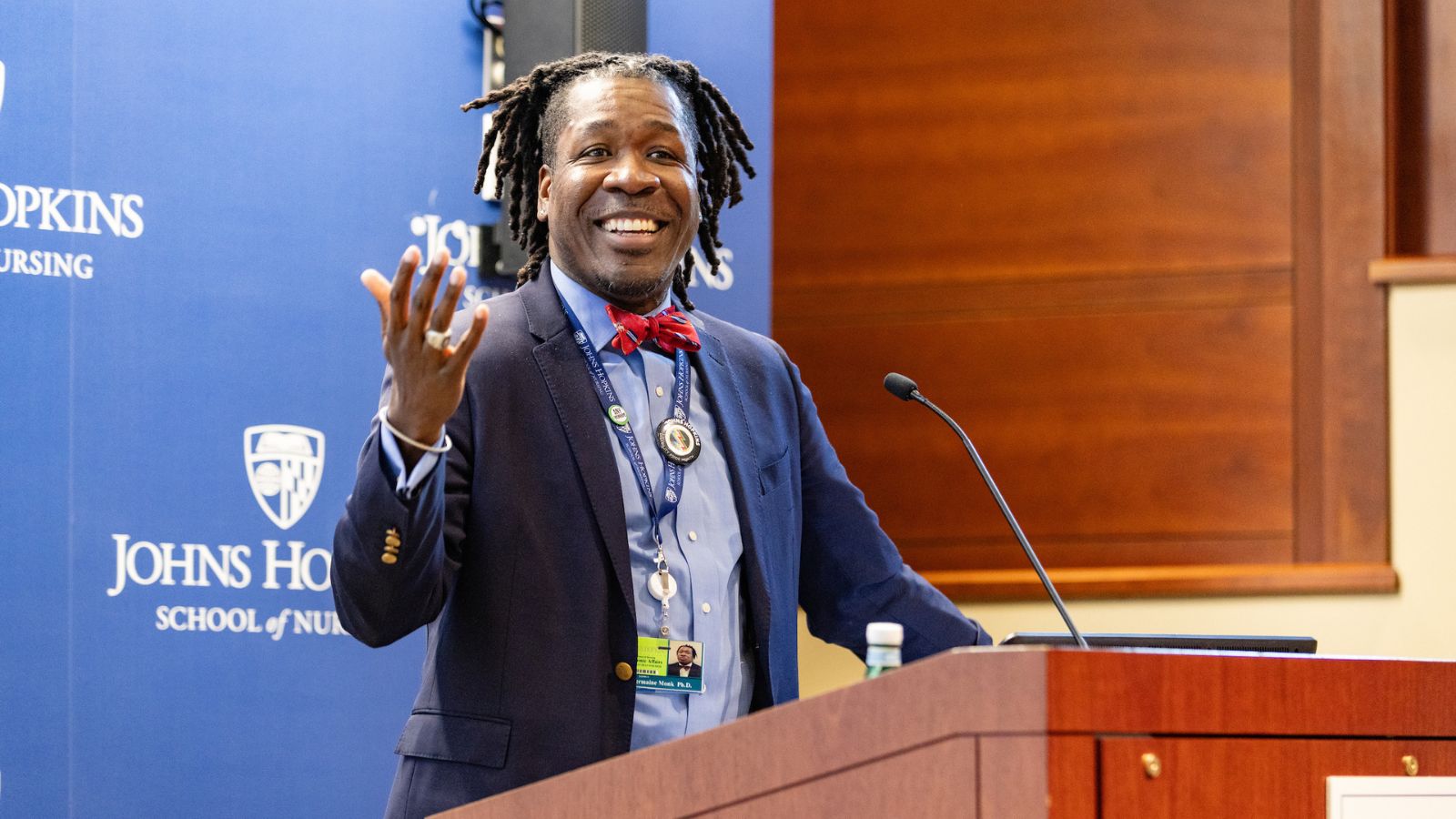Nurse Faculty Scholar puts ‘handymen’ to work turning older people’s homes into safe, healthy environments.
 Problem: Studies show that most frail, elderly people prefer to live in their own homes as they age. But many are forced into nursing homes or other institutions—often at great taxpayer expense—because they lack the amenities and services to care for themselves at home.
Problem: Studies show that most frail, elderly people prefer to live in their own homes as they age. But many are forced into nursing homes or other institutions—often at great taxpayer expense—because they lack the amenities and services to care for themselves at home.
Background: Sarah Szanton, PhD, CRNP, got her professional start in Washington, D.C., as an advocate for health care reform, but it wasn’t until she became a nurse that she became a player in the effort to redesign the health care system.
As a young policy analyst for a women’s health organization in the 1990s, Szanton—now an associate professor at the Johns Hopkins School of Nursing and a Robert Wood Johnson Foundation (RWJF) Nurse Faculty Scholar—looked on in admiration as nurses used their unique and profound insights into health care to educate policy-makers. She realized she could have more influence on health and health care as a nurse than as an analyst, so she decided to become one.
After earning her bachelor’s and master’s degrees in nursing, she cared for migrant workers in rural Pennsylvania, and for homeless and elderly people in inner-city Baltimore. In so doing, she saw firsthand the kinds of challenges to health and health care posed by poor living conditions.
One woman, for example, couldn’t get her wheelchair through the door into the kitchen. She would crawl to the refrigerator on her hands and knees, and reach up and grab whatever food she could. Szanton helped the woman find an apartment in a senior housing facility and watched as her blood sugar and blood pressure levels improved. “I could just see the effect of her new environment on her health,” Szanton recalls. “That was the start of it for me.”
While this woman was ready for a nursing home, most of Szanton’s patients—and indeed, most aging Americans—want to live in their own homes as long as they can. They want control over their own schedules, they want to prepare and eat their own foods, they want to live in the rooms they furnished and decorated themselves. In essence, they want the independence and freedom they have come to expect in a culture that cherishes these ideals.
The trouble, Szanton came to realize, is that many low-income elderly people lack the ability and the resources to modify their homes so they can bathe, feed, and care for themselves.
For most, the health care system is of little help. In large part, it fails to recognize how housing affects health, which leaves many low-income frail elderly in one of two undesirable situations: improperly cared for in their houses or forced to live in nursing homes at taxpayer expense.
Solution: Szanton, however, believes there is a middle ground. After earning her doctorate in nursing, she began studying ways to make it possible for low-income older adults to live in their own homes for a longer period of time. Her “a-ha” moment came when she realized the potential impact home maintenance workers could have on health; with simple tools and at a relatively low cost, she hypothesized, these so-called handymen and women can turn dangerous houses into safe and healthy homes.
She came up with a program called Community Aging in Place, Advancing Better Living for Elders, or CAPABLE. Based on a successful earlier program called Advancing Better Living for Elders, the CAPABLE program sends teams of nurses, occupational therapists, and home maintenance workers to the homes of low-income, frail elderly participants for 16 weeks. After an assessment of all functional areas, the participant decides on functional goals, such as taking a bath or walking to church, as opposed to medical ones, such as reducing blood sugar or blood pressure levels.
In 2009, Szanton received funding to study the program’s impact on a small group of seniors. A control group, meanwhile, received social visits from volunteers who played bingo, checkers, or engaged in other activities like scrapbooking.
The results showed that CAPABLE did, in fact, improve function, health, and quality of life. A participant in a subsequent study of the program, for example, had spent most of her time in her bedroom because, at 82, she did not have the strength to lift herself out of bed. It took her half an hour to walk down the hall to the bathroom, and she sat on the toilet for hours at a time because she lacked the strength to get up.
During the project, a nurse discovered that the woman was taking her medications—all 26 of them—at once, even though some were supposed to be taken throughout the day. The nurse made a medication chart, which helped the woman take the right drugs at the right times, and she is now more alert and less confused.
Home maintenance workers, meanwhile, installed railings on the stairs and alongside the outside steps. And an occupational therapist placed chairs along the hallway to help the woman walk to the bathroom, inserted risers beneath her bed, and taught her leg strengthening exercises. The woman can now get out of bed herself and get around her house, and she can get to the bathroom in seven minutes flat. Her family is thrilled; to celebrate, they are taking her to Atlantic City for her first vacation in years.
Participants aren’t the only beneficiaries. The program costs about $4,000 per participant, and its aim is to help reduce hospitalizations as well as placements in nursing homes, which cost about $75,000 to $100,000 per year. Overall, it may save taxpayers an average of $10,000 per beneficiary.
The program’s success has drawn attention. Szanton has received grants from the National Institutes of Health and the Centers for Medicare & Medicaid Services to further study the effects of the program and potentially make it available on a nationwide scale.
“We feel like we’re really on to something,” she says. Older Americans, who now have a better promise of living out their lives according to their own wishes, might agree.
RWJF Perspective: In 2011, Szanton was named an RWJF Nurse Faculty Scholar. The program is providing $350,000 over three years to support her research goals, plus invaluable mentoring and networking opportunities. The Nurse Faculty Scholars program aims to strengthen the academic productivity and overall excellence of nursing schools by developing the next generation of national leaders in academic nursing.
It complements a national campaign supported by RWJF to transform the nursing profession to improve health and health care. The Future of Nursing: Campaign for Action seeks to implement solutions to the challenges facing the nursing profession and to build upon nurse-based approaches to improving quality and transforming the way Americans receive health care. It is based on the recommendations from a groundbreaking Institute of Medicine nursing report released in 2010 called The Future of Nursing: Leading Change, Advancing Health.
This blog was originally published by the Robert Wood Johnson Foundation.
 Forging Policy: How Can Doulas Improve Black Maternal Health?
Forging Policy: How Can Doulas Improve Black Maternal Health? Q & A With Forensic Nurse, Michelle Patch
Q & A With Forensic Nurse, Michelle Patch You’re Welcome
You’re Welcome Dr. Robert Atkins, Anna D. Wolf Endowed Professor
Dr. Robert Atkins, Anna D. Wolf Endowed Professor Forging Policy: Associate Dean Jermaine Monk and Education After Affirmative Action
Forging Policy: Associate Dean Jermaine Monk and Education After Affirmative Action






